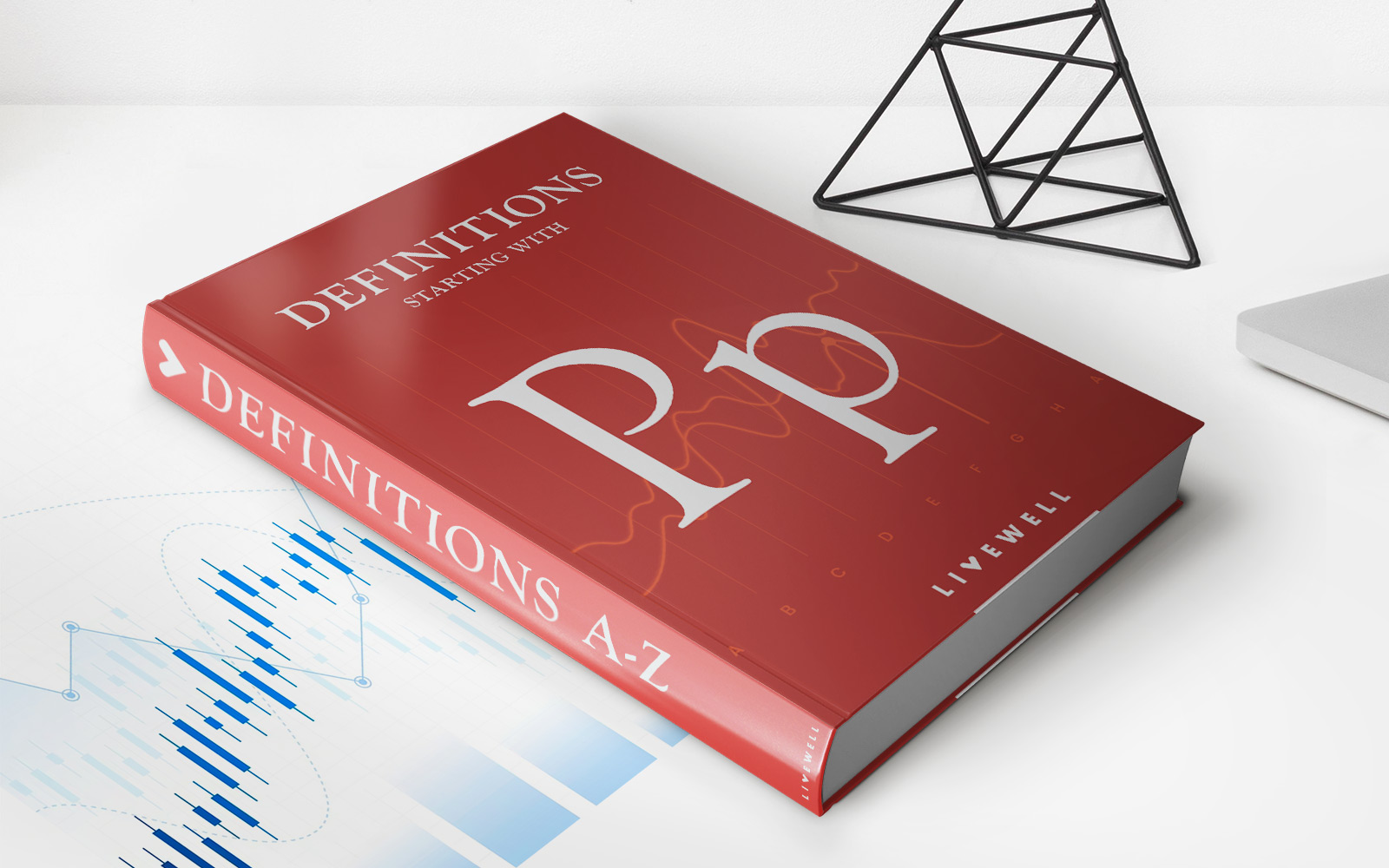

Finance
What Is Alternative Motor Vehicle Credit
Published: January 10, 2024
Discover how the Alternative Motor Vehicle Credit can benefit your finances. Explore tax incentives and savings for investing in eco-friendly vehicles.
(Many of the links in this article redirect to a specific reviewed product. Your purchase of these products through affiliate links helps to generate commission for LiveWell, at no extra cost. Learn more)
Table of Contents
- Introduction
- Overview of Alternative Motor Vehicle Credit
- Eligibility for Alternative Motor Vehicle Credit
- Calculation of Alternative Motor Vehicle Credit
- Claiming the Alternative Motor Vehicle Credit
- Limitations and Restrictions of Alternative Motor Vehicle Credit
- Examples of Alternative Motor Vehicle Credit Calculation
- Conclusion
Introduction
Welcome to our comprehensive guide on Alternative Motor Vehicle Credit! If you’re interested in reducing your carbon footprint, saving on fuel costs, and taking advantage of potential tax incentives, this article is for you. Alternative Motor Vehicle Credit is a tax credit offered by the federal government to encourage the adoption of environmentally friendly vehicles.
In recent years, there has been a growing concern about the environmental impact of traditional gasoline-powered vehicles. As a result, many individuals and businesses are turning to alternative fuel vehicles, such as electric, hybrid, and hydrogen-powered cars, to reduce emissions and promote sustainability. To incentivize this shift, the government introduced the Alternative Motor Vehicle Credit.
This tax credit is designed to offset the higher upfront costs associated with purchasing alternative fuel vehicles. By providing a financial benefit to eligible individuals and businesses, the government aims to encourage the adoption of these vehicles and help promote a cleaner and greener future.
Throughout this article, we will provide an overview of Alternative Motor Vehicle Credit, including eligibility requirements, how the credit is calculated, and how to claim it on your tax return. We will also discuss any limitations or restrictions you should be aware of before deciding to take advantage of this tax credit.
Whether you’re considering purchasing a hybrid car for your daily commute or looking to add an electric vehicle to your company’s fleet, understanding Alternative Motor Vehicle Credit is crucial. By taking advantage of this tax credit, you can not only reduce your environmental impact but also save money in the process.
So, let’s dive in and explore the world of Alternative Motor Vehicle Credit!
Overview of Alternative Motor Vehicle Credit
Alternative Motor Vehicle Credit, also known as the Plug-In Electric Drive Vehicle Credit, is a tax credit offered by the federal government to incentivize the purchase of qualified alternative fuel vehicles. The credit is designed to offset a portion of the higher upfront costs associated with these environmentally friendly vehicles.
The credit is available for various types of alternative fuel vehicles, including electric cars, hybrid vehicles, hydrogen fuel cell vehicles, and alternative fuel motorcycles. By promoting the adoption of these vehicles, the government aims to reduce greenhouse gas emissions and promote a more sustainable transportation sector.
The amount of the credit varies depending on the type of vehicle and its battery capacity. For electric vehicles, the credit ranges from $2,500 to $7,500, depending on the size of the battery. Hybrid vehicles typically qualify for a credit of up to $4,000, while hydrogen fuel cell vehicles can receive a credit of up to $4,500.
It’s important to note that the Alternative Motor Vehicle Credit is a non-refundable tax credit, meaning it can only be used to offset your tax liability. If you don’t owe any federal taxes, you won’t be able to receive a refund for any unused portion of the credit. However, you can carry any unused credit forward to future tax years.
In order to claim the credit, you must meet certain eligibility requirements. These include purchasing a qualifying vehicle brand new (not used), using the vehicle primarily in the United States, and allocating the vehicle for personal, non-commercial use. Additionally, different credit amounts apply based on the vehicle manufacturer and the number of vehicles sold by that manufacturer.
It’s important to stay up to date with the IRS guidelines and consult with a tax professional to ensure you meet all the requirements and correctly calculate your credit. The government periodically updates the credit amounts and eligibility criteria, so it’s important to check for any changes before making a purchase.
In the next sections of this guide, we will delve deeper into the eligibility requirements, calculation methods, and claiming process for the Alternative Motor Vehicle Credit. We will also discuss the limitations and restrictions that may apply. So, let’s continue our journey into the world of Alternative Motor Vehicle Credit!
Eligibility for Alternative Motor Vehicle Credit
In order to qualify for the Alternative Motor Vehicle Credit, you must meet specific eligibility criteria set by the IRS. These criteria ensure that the credit is appropriately allocated to individuals and businesses who are actively contributing to reducing emissions and promoting the use of alternative fuel vehicles. Let’s take a closer look at the key requirements:
- Purchase of Qualifying Vehicle: To be eligible, you must purchase a new qualified alternative fuel vehicle. Used vehicles are not eligible for the credit. The vehicle must be acquired for use or lease by the taxpayer and not for resale.
- Primary Use in the United States: The vehicle must be primarily used within the United States. The IRS requires that the vehicle is driven and registered in the U.S. to qualify for the credit.
- Vehicle Manufacturer Certification: The vehicle must be certified by the manufacturer as meeting the necessary requirements for the credit. It’s essential to ensure that the vehicle you intend to purchase is eligible for the credit before making the purchase.
- Personal Use: The vehicle must be used mainly for personal purposes and not for commercial or business purposes. This means that if you primarily use the vehicle for business purposes or as part of a fleet, you may not be eligible for the credit.
It’s crucial to note that the Alternative Motor Vehicle Credit is subject to phase-out rules. The credit begins to phase out for a particular manufacturer’s vehicles once they have sold more than 200,000 qualifying vehicles. As a result, the credit amount gradually reduces over time until it phases out completely.
It’s also important to keep in mind that the eligibility and credit amounts may vary depending on the type of alternative fuel vehicle. Electric vehicles, hybrid vehicles, hydrogen fuel cell vehicles, and alternative fuel motorcycles each have their own specific criteria and credit amounts.
Furthermore, eligibility and credit amounts can change over time. The IRS periodically updates the credit amounts and eligibility requirements, so it’s crucial to stay informed and check for any changes before making a purchase or filing your tax return.
Consulting with a tax professional or reviewing the IRS guidelines is recommended to ensure that you meet all the eligibility requirements and correctly calculate your credit. Next, let’s explore how the Alternative Motor Vehicle Credit is calculated.
Calculation of Alternative Motor Vehicle Credit
The calculation of the Alternative Motor Vehicle Credit can be a bit complex, as it depends on various factors such as the type of vehicle, battery capacity, and the manufacturer’s sales volume. Understanding how the credit is calculated is essential to determine the potential tax benefit you may receive. Let’s break down the key components of the calculation:
- Type of Vehicle: The credit amount varies depending on the type of alternative fuel vehicle. Electric vehicles, hybrid vehicles, hydrogen fuel cell vehicles, and alternative fuel motorcycles each have their own specific credit amounts.
- Battery Capacity: For electric vehicles, the credit amount is determined based on the vehicle’s battery capacity. Generally, the larger the battery capacity, the higher the credit amount. The IRS provides a table that outlines the specific credit amounts based on battery size.
- Manufacturer’s Sales Volume: The credit amount is subject to a phase-out rule based on the number of vehicles sold by the manufacturer. Once a manufacturer sells more than 200,000 qualifying vehicles, the credit begins to phase out. As a result, the credit amount gradually reduces until it reaches zero. It’s important to check the current status of the manufacturer’s sales volume to determine the applicable credit amount.
For example, let’s say you purchase a new electric vehicle with a battery capacity that qualifies for a $7,500 credit. If the vehicle qualifies for the full credit amount and the manufacturer’s sales volume has not reached the phase-out threshold, you may be eligible for the full $7,500 credit.
However, if the manufacturer has already sold a significant number of qualifying vehicles and the credit is subject to phase-out, the amount of credit you can claim may be reduced. The specific reduction amount depends on the current phase-out percentage set by the IRS for that manufacturer.
Keep in mind that the Alternative Motor Vehicle Credit is a non-refundable credit, meaning it can only be used to offset your tax liability. If your tax liability is less than the credit amount, you won’t receive a refund for the unused portion of the credit. However, you may be able to carry forward any unused credit to future tax years.
It’s important to consult with a tax professional or refer to the IRS guidelines to ensure that you correctly calculate the credit based on your specific circumstances. Next, let’s explore how to claim the Alternative Motor Vehicle Credit on your tax return.
Claiming the Alternative Motor Vehicle Credit
Claiming the Alternative Motor Vehicle Credit involves completing the appropriate forms and including the necessary information on your federal tax return. Here are the steps to follow in order to claim the credit:
- Determine Eligibility: Before claiming the credit, ensure that you meet all the eligibility criteria for the Alternative Motor Vehicle Credit, including the type of vehicle, purchase status, use within the United States, and personal use requirements.
- Obtain the Manufacturer’s Certification: Make sure that the vehicle you purchased is eligible for the credit by obtaining the manufacturer’s certification. This confirms that the vehicle meets the necessary requirements and qualifies for the credit.
- Complete the Appropriate Form: To claim the Alternative Motor Vehicle Credit, you typically need to complete Form 8910, “Alternative Motor Vehicle Credit.” This form requires you to provide details about the vehicle, including the year, make, and model, as well as the credit amount you are claiming.
- Calculate the Credit: Use the information discussed in the previous section to correctly calculate the credit amount based on the type of alternative fuel vehicle, battery capacity, and the manufacturer’s sales volume.
- Include the Credit on Your Tax Return: Once you have completed Form 8910 and determined the credit amount, include this information on the appropriate section of your federal tax return. This ensures that the credit is applied to offset your tax liability.
It’s essential to review the IRS guidelines and instructions for Form 8910 to ensure that you properly complete the form and include all necessary documentation. Failing to provide accurate information or meet all requirements could result in delays or potential denial of the credit.
Remember that the Alternative Motor Vehicle Credit is a non-refundable credit, meaning it can only be used to offset your tax liability. If the credit amount exceeds your tax liability, you won’t receive a refund for the unused portion of the credit. However, you may be able to carry forward any unused credit to future tax years.
As always, it’s recommended to consult with a tax professional who can provide guidance and help ensure that you meet all the necessary requirements for claiming the Alternative Motor Vehicle Credit. They can assist you in accurately completing the forms and maximizing the credit amount you can claim.
Now that you understand how to claim the credit, let’s explore some of the limitations and restrictions that may apply to the Alternative Motor Vehicle Credit.
Limitations and Restrictions of Alternative Motor Vehicle Credit
While the Alternative Motor Vehicle Credit offers a valuable tax incentive for individuals and businesses adopting alternative fuel vehicles, it’s important to be aware of the limitations and restrictions that may apply. Understanding these limitations will help you make informed decisions and properly evaluate the potential benefits of the credit. Here are some key limitations and restrictions to consider:
- Phase-Out Period: The Alternative Motor Vehicle Credit is subject to a phase-out period once a vehicle manufacturer sells more than 200,000 qualifying vehicles. Once the phase-out begins, the credit amount gradually reduces until it is completely phased out. Prioritize researching the manufacturer’s sales volume to determine if the credit amount is affected.
- Non-Refundable Credit: The Alternative Motor Vehicle Credit is a non-refundable credit, meaning it can only be used to offset your tax liability. If your tax liability is less than the credit amount, you won’t receive a refund for any unused portion of the credit. However, you may be able to carry forward any unused credit to future tax years.
- Expiry Dates: The Alternative Motor Vehicle Credit has an expiry date for each eligible vehicle model. This means that the credit may not be available for certain vehicle models if they are not purchased within the specified timeframe. It’s crucial to research the specific expiry dates and ensure that your purchase falls within the eligible period.
- Qualifying Vehicle Requirements: To be eligible for the credit, the vehicle must meet specific requirements set by the IRS. These requirements include battery capacity, vehicle type, and manufacturer certification. It’s important to verify that the vehicle you intend to purchase meets all the criteria to ensure that you can claim the credit.
- Personal Use Requirement: The Alternative Motor Vehicle Credit is primarily intended for personal use vehicles. If you plan to use the vehicle predominantly for business or commercial purposes, you may not be eligible for the credit. Make sure to review the guidelines to determine if your vehicle’s usage qualifies for the credit.
It’s crucial to stay updated on the latest IRS guidelines and regulations as they pertain to the Alternative Motor Vehicle Credit. The government periodically updates the credit amounts, eligibility criteria, and other related provisions. Before making any decisions related to the credit, it’s wise to consult with a tax professional who can provide guidance tailored to your specific situation.
Despite the limitations and restrictions, the Alternative Motor Vehicle Credit remains a valuable incentive for reducing emissions and promoting alternative fuel vehicles. By understanding these limitations, you can take full advantage of the credit while accounting for any potential challenges or considerations.
Now that we’ve explored the limitations and restrictions, let’s take a look at some practical examples to better understand how the Alternative Motor Vehicle Credit is calculated.
Examples of Alternative Motor Vehicle Credit Calculation
Let’s walk through some examples to illustrate how the Alternative Motor Vehicle Credit is calculated. These examples are intended to provide a general understanding of how the credit amount can vary based on different factors such as the type of vehicle, battery capacity, and the manufacturer’s sales volume.
Example 1:
John purchases a new electric vehicle with a battery capacity of 50 kWh. According to the IRS guidelines, this battery capacity qualifies for a $7,500 credit. The manufacturer of the vehicle has not yet reached the phase-out threshold. Therefore, John is eligible for the full credit amount of $7,500.
Example 2:
Sarah buys a new hybrid vehicle that qualifies for a $4,000 credit. However, the manufacturer of the vehicle has already sold more than 200,000 qualifying vehicles, and the credit is subject to phase-out. As per the current phase-out rules, the credit is reduced by 50%. Therefore, Sarah can claim a credit of $2,000 instead of the full $4,000.
Example 3:
Michael purchases a new hydrogen fuel cell vehicle that qualifies for a $4,500 credit. The manufacturer of the vehicle is in the phase-out period, and the credit amount has been reduced by 80%. Consequently, Michael can claim a credit of $900 instead of the full $4,500.
These examples demonstrate the impact of factors such as battery capacity and the manufacturer’s sales volume on the credit amount. It’s important to note that the examples provided are for illustrative purposes only and may not reflect the specific credit amounts applicable at the time of reading.
To accurately calculate the Alternative Motor Vehicle Credit for your situation, consult the latest IRS guidelines, consider the specific details of your vehicle, and verify the manufacturer’s sales volume to determine any potential phase-out reductions.
As always, it’s recommended to consult with a tax professional who can provide personalized guidance based on your unique circumstances and ensure that you correctly calculate and claim the appropriate credit amount on your tax return.
Now that we have explored the examples, let’s conclude our guide on the Alternative Motor Vehicle Credit.
Conclusion
The Alternative Motor Vehicle Credit provides a valuable tax incentive for individuals and businesses looking to adopt environmentally friendly vehicles. By offsetting a portion of the higher upfront costs associated with alternative fuel vehicles, the credit encourages the transition to cleaner and greener transportation options.
In this comprehensive guide, we’ve covered the key aspects of the Alternative Motor Vehicle Credit, including its purpose, eligibility criteria, calculation methods, claiming process, and limitations. It’s important to stay up to date with the IRS guidelines and consult with a tax professional to ensure that you meet all the requirements and accurately calculate the credit based on your specific circumstances.
While there may be limitations and restrictions, such as the phase-out period and non-refundable credit nature, the Alternative Motor Vehicle Credit can still provide substantial financial benefits to those who qualify. Additionally, by choosing alternative fuel vehicles, individuals and businesses contribute to a cleaner environment and a more sustainable future.
Whether you’re interested in electric cars, hybrid vehicles, hydrogen fuel cell cars, or alternative fuel motorcycles, understanding the Alternative Motor Vehicle Credit can help you make an informed decision and maximize your potential tax savings.
Remember to research vehicle eligibility, determine your tax liability, and complete the appropriate forms to claim the credit accurately. Consulting with a tax professional is always recommended to ensure compliance with IRS regulations and optimize your tax benefits.
We hope this guide has provided you with valuable insights into the Alternative Motor Vehicle Credit and its potential impact on your financial and environmental goals. By taking advantage of this tax credit, you can contribute to a greener planet while enjoying the benefits of reduced emissions and potential cost savings.
So, if you’re ready to make the switch to an alternative fuel vehicle, explore the available options, review the eligibility requirements, and take advantage of the Alternative Motor Vehicle Credit. Together, we can create a more sustainable future for generations to come.














